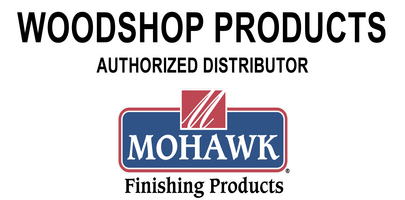MOHAWK Professional Leather System
Identifying different types of leather finishes and determining
what touch-up and repair products are suited for each can be a
difficult task.
To make it easy, all Professional Leather System
products are coded to help you choose the correct products.
Below you’ll find simple descriptions of different kinds of
leather, and their corresponding Codes. All products on the
following pages are coded to make it easy to match leathers
with the appropriate products.
Aniline (also called Natural) (A)
The surface of this leather has been colored with transparent
dyes. This transparency is similar to looking at a piece of
stained wood, whereas the grain stays natural and visibly
distinguishable. Aniline leather will have imperfections
and differences, just as fingerprints are different for each
individual. This difference is nature’s signature and assurance
that every hide is one of a kind. These leathers have minimal
surface protection and thus tend to show the effects of usage
such as wear, scratches, UV exposure, etc.
To maintain the natural beauty of aniline leather it is
mandatory to establish a routine of cleaning and protection.
Leather Protector should be applied right at the beginning of
usage. Cleaning and protection should then be done every six
months, even more often on high traffic areas.
Semi-Aniline (A)
This leather is covered with a lightly pigmented coating on
which transparent and brilliant colors are oversprayed to
reconstruct the natural appearance of the leather. Since the
coating is thin, it offers only minimal protection, so an
application of Leather Protector is recommended.
Pigmented or Top Coated (P)
This is the most widely used finishing technique. The finish
consists of an opaque basecoat of pigmented resins followed
by a protective topcoat. The natural color of the leather is
completely covered. Therefore, pigmented leather can be
identified by its uniform color. It is ideal for high use items
like furniture or automotive seats, especially when you want
your kids to use them “trouble-free”. With the aid of Mohawk
Professional Leather Care products, these leathers are easily
maintained. If restoration is necessary, full re-coloring is
possible
Pull Up (X)
Fashions come and go, but waxy and oiled leathers are here
to stay. These two related types of leather are called “pull
up,” a phrase originally used to describe the effect on a type
of leather also known as “Timberland” after that well-known
footwear producer made this type of article famous. These
leathers lighten when stretched, bent or “pulled up.” They
are categorized as natural because they do not have a thick
topcoat.
Nubuck (N)
This leather is actually aniline leather that has been sanded
to give it a fine, velvety surface. It should not be confused
with suede, which is the flesh side of leather. The look and
feel of nubuck leather is incomparable for low use applications
where elegance is desired. To properly care for nubuck, it
is important to adhere to a routine of cleaning followed by
protection. This regimen should begin as soon as the piece is
put into use and continued at regular intervals throughout the
life of the piece. MOHAWK has specific products for the care
and preservation of nubuck leather. It is important to use these
specialized Nubuck products on Nubuck leathers.
Bycast (B)
This is a completely different system of finishing or enhancing
leather (usually split leather or heavily buffed leather). It
maintains a very consistent thickness and softness over the
entire area of the leather, not only on any given hide but
from hide to hide as well. The technique consists of creating
the finishing film on a continual support of release paper. An
adhesive is applied to the film, and then the film is pressed
on the leather. The finished leather is then removed from the
release paper displaying a perfectly uniform surface. Often,
when stretching bycast leather, you can see a lighter color
that reverts back to the original color once the pressure is
released. This is sometimes used to identify bycast leathers.
